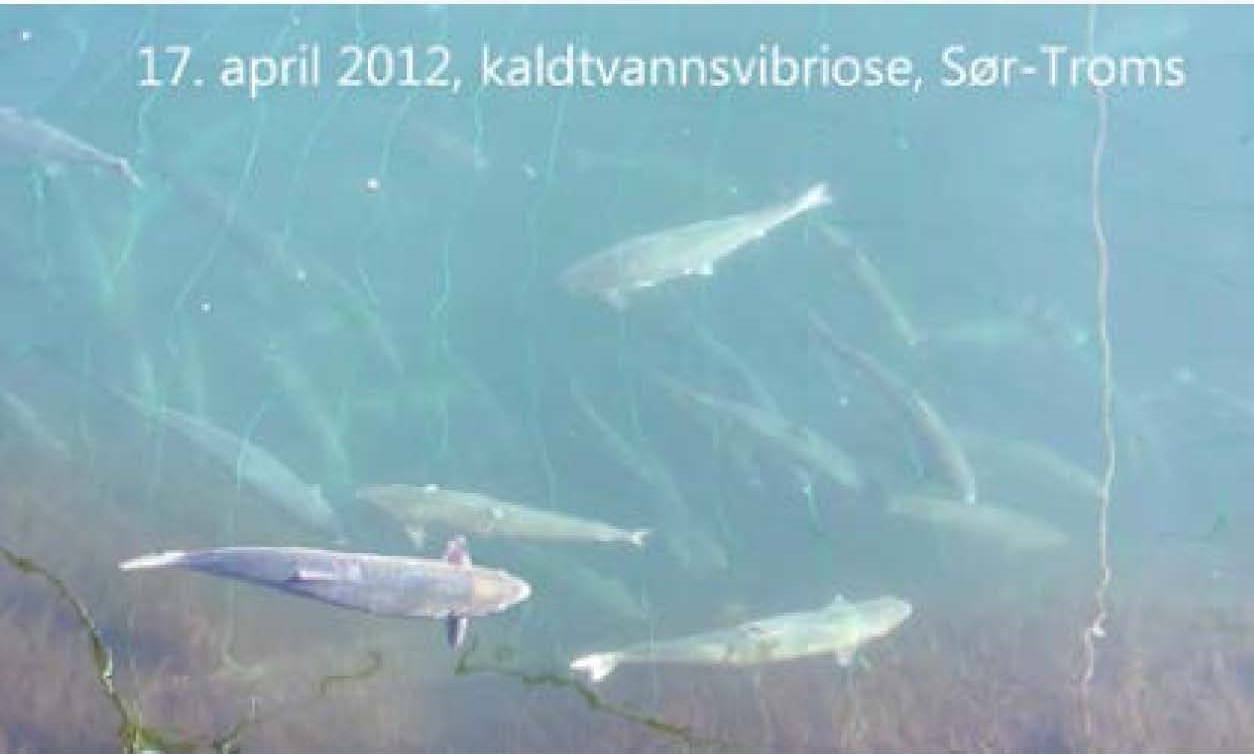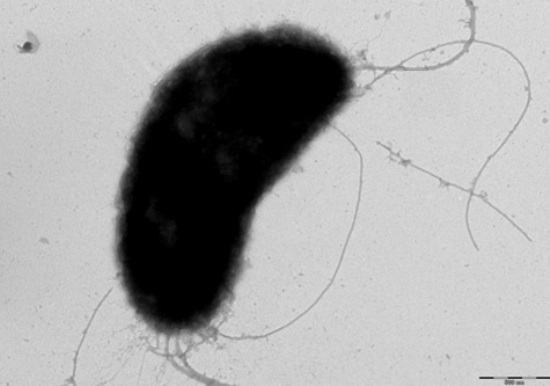The Mystery of Reproduction
Can you think of an organism
that has been around for hundreds of years yet still very little is
known about its life cycle? One such organism as this is
Vibrio salmonicida. With the
genus being Vibrio, you would think that it has a similar life history and
reproduction to other species within that genus. However, the
reproduction of Vibrio salmoncidia can be very different
when the organism is in the water, as opposed to when it is in
the host.
When the organism is in the water, it needs to be able to survive
for a long time without supplemental nutrients (Hoff 1989). During
this period of time, not much is happening in the cell. When the
organism is in the water for a long period of time and needs to
survive, it goes into a stage called starvation survival (Hoff
1989). Since the nutritients in the sea water are very limited,
the organism is unable to do anything. Therefore, Vibrio
Salmonicida ceases growing during this period in the water (Hoff
1989).
Vibrio salmonicida’s supply of nutrients can be taken up from the water in order to survive until it reaches a host cell, where it will receive more nutrients in order to replicate and take over the host. However, it has been found that salinity and temperature do play an important role in Vibrio salmonicida’s survival. Kjell Arne Hoff’s research investigates how the salinity of the water affects Vibrio salmonicida, while keeping the temperature constant. The results showed that as the salt concentration increased in the water, the short-term starvation of Vibrio salmonicida decreased as the weeks increase (Hoff 1989). Therefore, the saltier the water, the harder it is for the bacteria to survive for a long time. This can greatly affect the areas in which Vibrio salmonicida live.
 Unlike the
well-documented life cycle of
Vibrio salmoncida when it is in the water, there is not a lot of
information about the bacteria
when it is inside the host. What is known about the life cycle,
however,
is the fact that the bacteria is transmitted through the fish population and is
spread to the fish’s gut and other areas. The source of the bacteria
is either from the water or from a wild fish (Bruno 1996). Vibrio salmonicida
enters its selected fish via an unknown process, which likely
involves the fish’s gills (Bjelland et al. 2012 a). The fish's bloodstream
is an adequate place for nutrition acquisition. After the bacteria quickly
goes through the bloodstream, it enters organs in the abdomen, which
has more nutrients (Farmer III and Hickman-Brenner, 1991).
Unlike the
well-documented life cycle of
Vibrio salmoncida when it is in the water, there is not a lot of
information about the bacteria
when it is inside the host. What is known about the life cycle,
however,
is the fact that the bacteria is transmitted through the fish population and is
spread to the fish’s gut and other areas. The source of the bacteria
is either from the water or from a wild fish (Bruno 1996). Vibrio salmonicida
enters its selected fish via an unknown process, which likely
involves the fish’s gills (Bjelland et al. 2012 a). The fish's bloodstream
is an adequate place for nutrition acquisition. After the bacteria quickly
goes through the bloodstream, it enters organs in the abdomen, which
has more nutrients (Farmer III and Hickman-Brenner, 1991).
Once the organism enters the bloodstream,
it uses one of its many flagella to find its way to the abdominal organs
where the life cycle begins (Veterinary Science). The flagella allow
the organism to move throughout the inside of the fish and spread
the infection (Bjelland et al. 2012 a). Interestingly, if Vibrio
salmonicida contains a gene known as LitR mutant, the bacterium
has increased motility, adhesion, cell-to-cell adhesion, and biofilm
formation (Bjelland et al. 2012 a). Therefore, the likelihood of the
fish obtaining the disease is increased. Vibrio salmoncidia
has a surface antigen VS-P1 that is released during the growth of
the fish. However, not much is known about this;
it is hypothesized that this antigen binds to particular antibodies to protect
the bacteria from being engulfed by the fish’s immune system
(Bjelland et al. 2012 a).
This is the final step in acquiring
nutrients and creating a disease. Research supports that the
bacteria releases a substance that is used to converse with other
bacteria in the fish to make sure a deadly infection occurs
(Veterinary Science). As stated earlier this infection occurs in the
abdomen of the fish and can become extremely harmful, resulting in many
different symptoms that will eventually lead to death.
 Unfortunately, since the research in the life cycle of Vibrio
salmonicida is lacking, it is hard to give an accurate picture of
the life cycle. As of now this is the best information known about the organism.
Unfortunately, since the research in the life cycle of Vibrio
salmonicida is lacking, it is hard to give an accurate picture of
the life cycle. As of now this is the best information known about the organism.
Learn more about Vibrio salmonicida's Interactions or go back to the Home Page.
See References.
